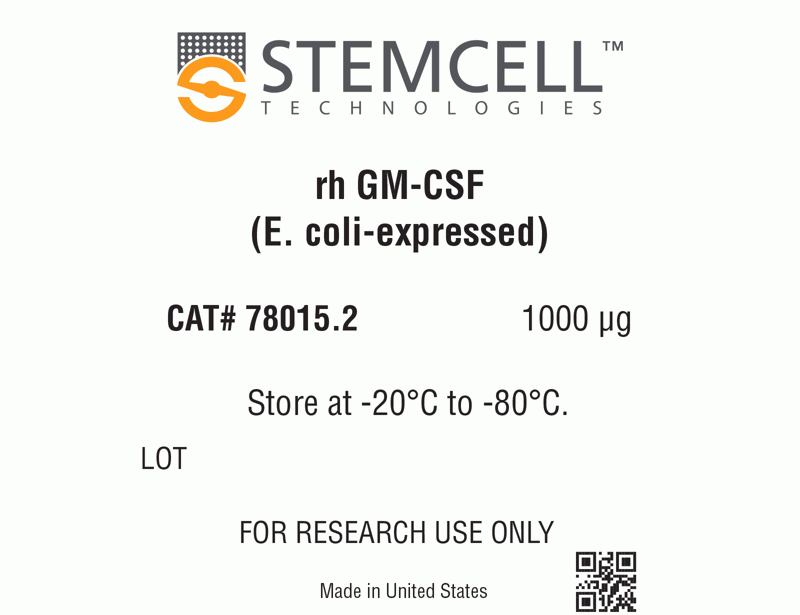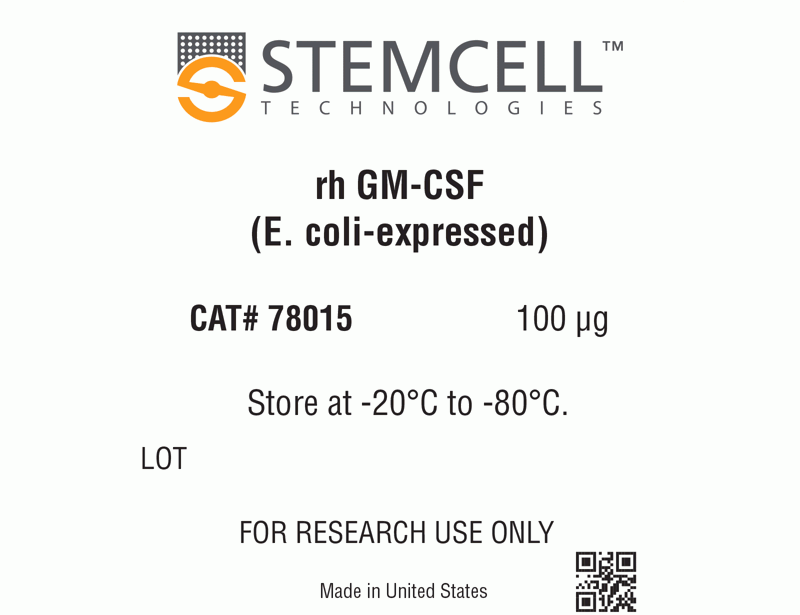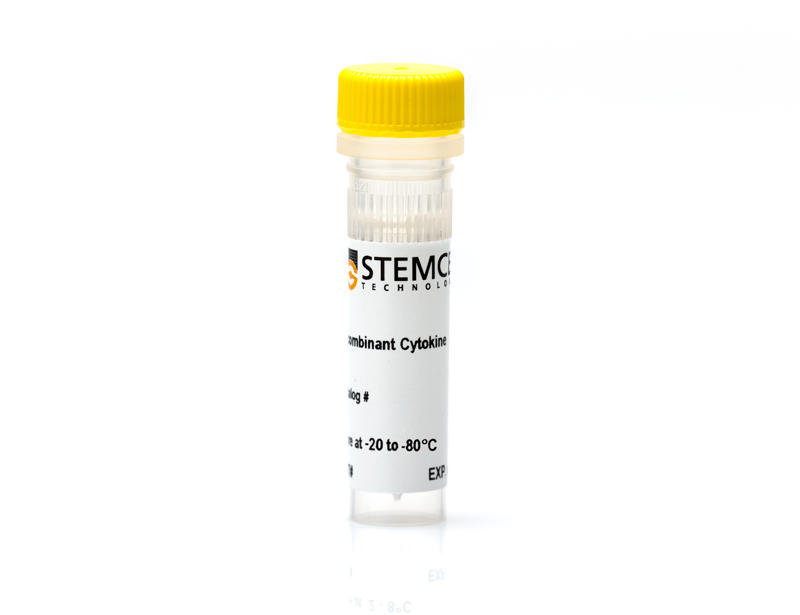概要
Granulocyte-macrophage colony-stimulating factor (GM-CSF) promotes the proliferation and differentiation of hematopoietic progenitor cells and the generation of neutrophils, eosinophils, and macrophages. In synergy with other cytokines such as stem cell factor, IL-3, erythropoietin, and thrombopoietin, it also stimulates erythroid and megakaryocyte progenitor cells (Barreda et al.). GM-CSF is produced by multiple cell types, including stromal cells, Paneth cells, macrophages, dendritic cells (DCs), endothelial cells, smooth muscle cells, fibroblasts, chondrocytes, and Th1 and Th17 T cells (Francisco-Cruz et al.). The receptor for GM-CSF (GM-CSFR) is composed of two subunits: the cytokine-specific α subunit (GMRα; CD116) and the common subunit βc (CD131) shared with IL-3 and IL-5 receptors (Broughton et al.). GM-CSFR is expressed on hematopoietic cells, including progenitor cells and immune cells, as well as non-hematopoietic cells. Recombinant human GM-CSF (rhGM-CSF) promotes the production of myeloid cells of the granulocytic (neutrophils, eosinophils and basophils) and monocytic lineages in vivo. It has been tested for mobilization of hematopoietic progenitor cells and for treating chemotherapy-induced neutropenia in patients. GM-CSF is able to stimulate the development of DCs that ingest, process, and present antigens to the immune system (Francisco-Cruz et al.).
数据及文献
Publications (1)
Nature communications 2014 jul
Direct induction of haematoendothelial programs in human pluripotent stem cells by transcriptional regulators.
I. Elcheva et al.
Abstract
Advancing pluripotent stem cell technologies for modelling haematopoietic stem cell development and blood therapies requires identifying key regulators of haematopoietic commitment from human pluripotent stem cells (hPSCs). Here, by screening the effect of 27 candidate factors, we reveal two groups of transcriptional regulators capable of inducing distinct haematopoietic programs from hPSCs: pan-myeloid (ETV2 and GATA2) and erythro-megakaryocytic (GATA2 and TAL1). In both cases, these transcription factors directly convert hPSCs to endothelium, which subsequently transform into blood cells with pan-myeloid or erythro-megakaryocytic potential. These data demonstrate that two distinct genetic programs regulate the haematopoietic development from hPSCs and that both of these programs specify hPSCs directly to haemogenic endothelial cells. In addition, this study provides a novel method for the efficient induction of blood and endothelial cells from hPSCs via the overexpression of modified mRNA for the selected transcription factors.
View All Publications


 网站首页
网站首页






